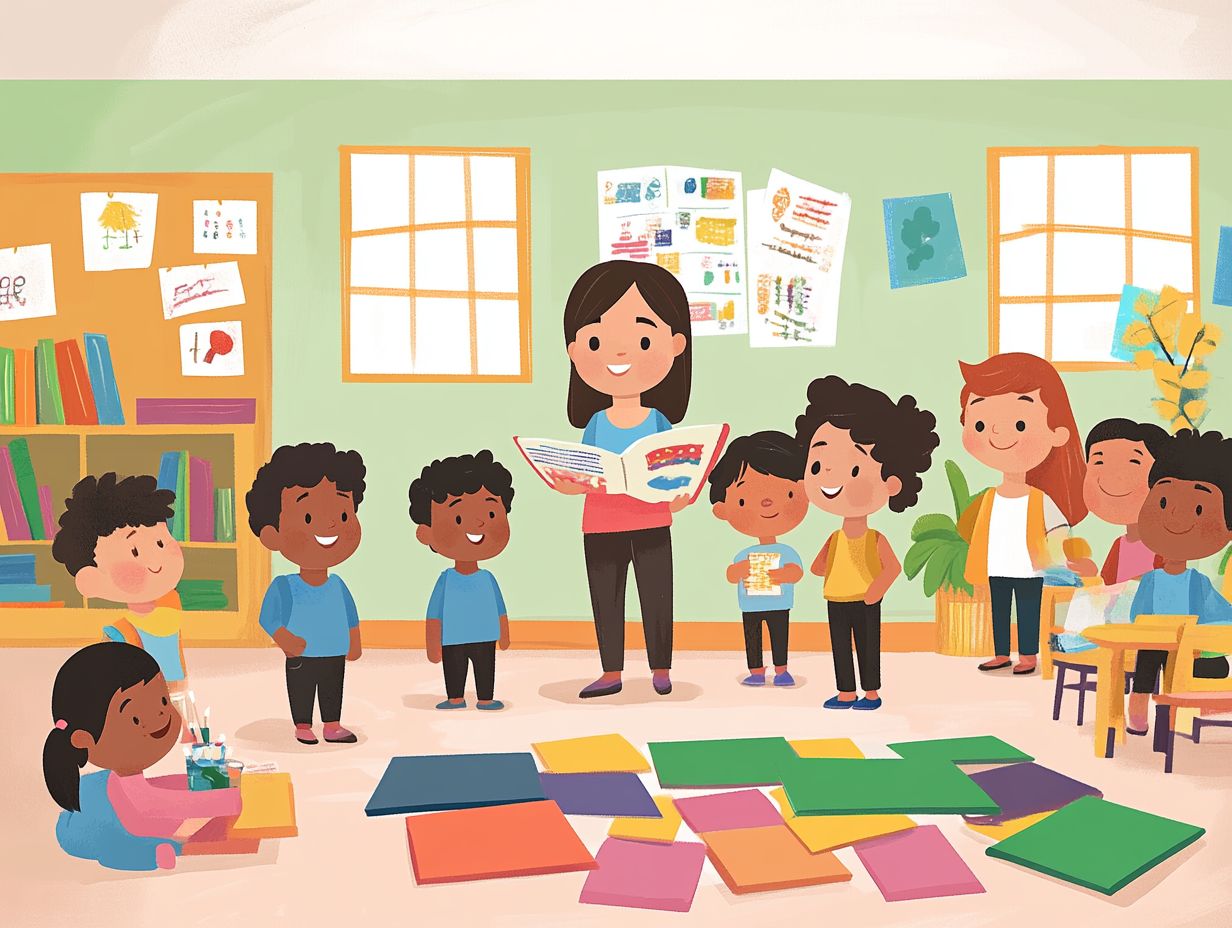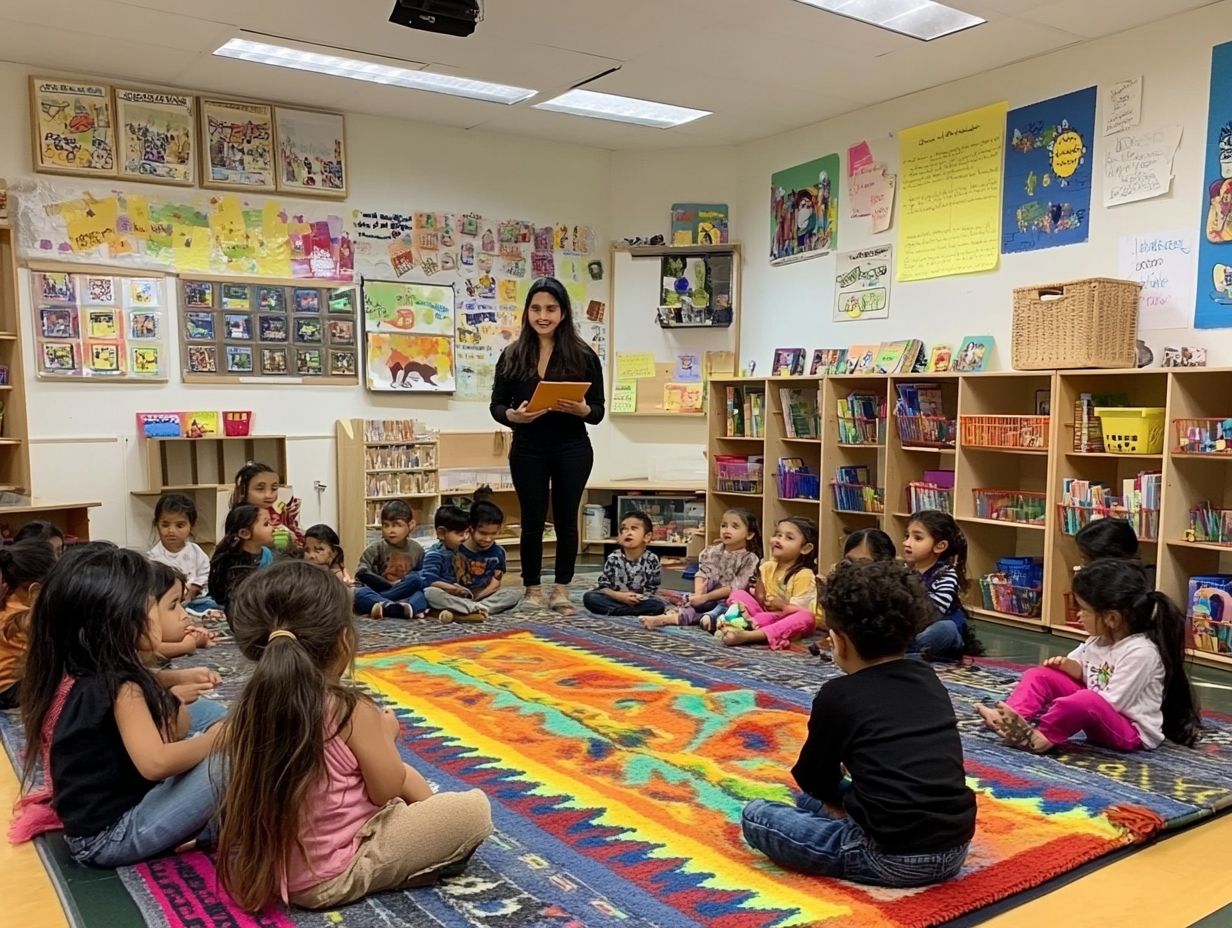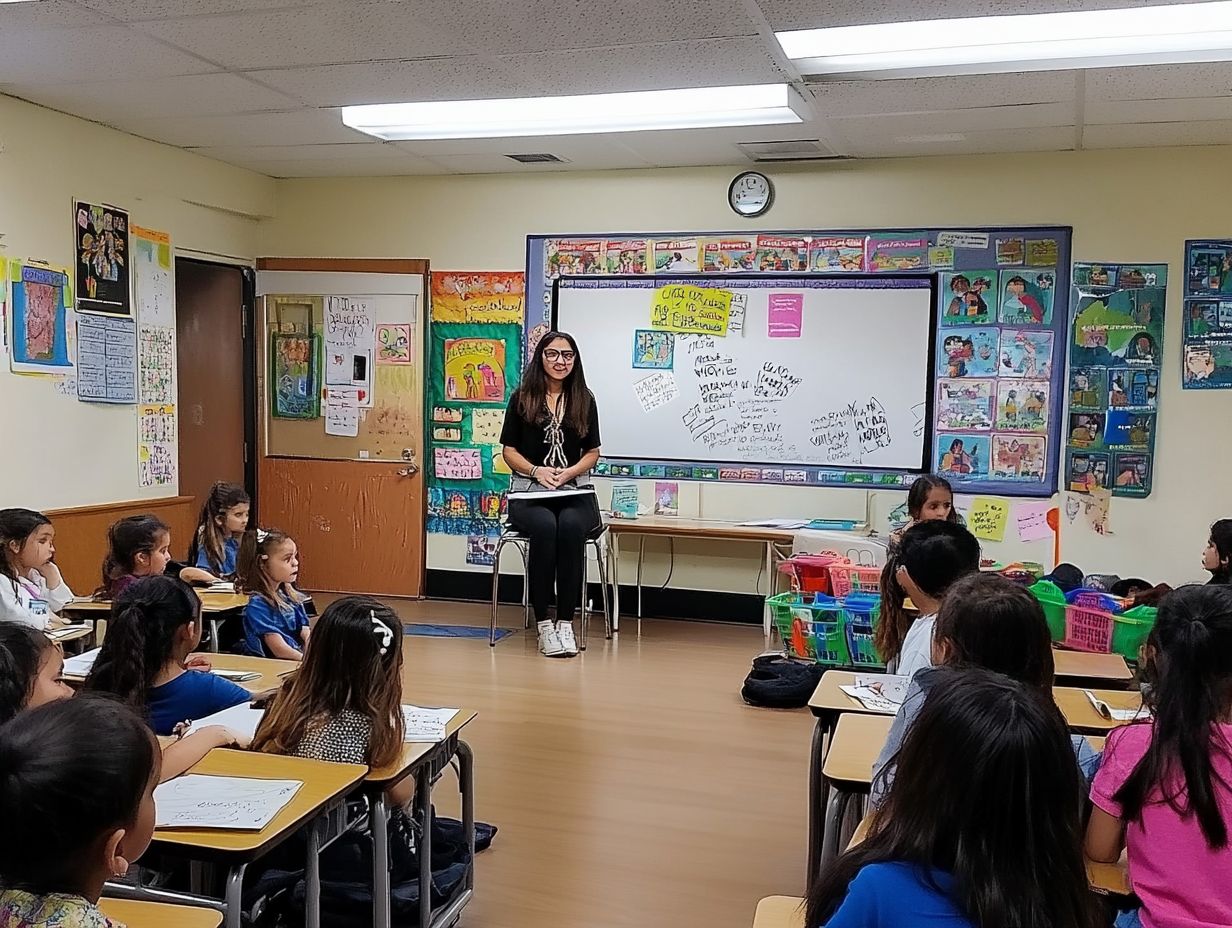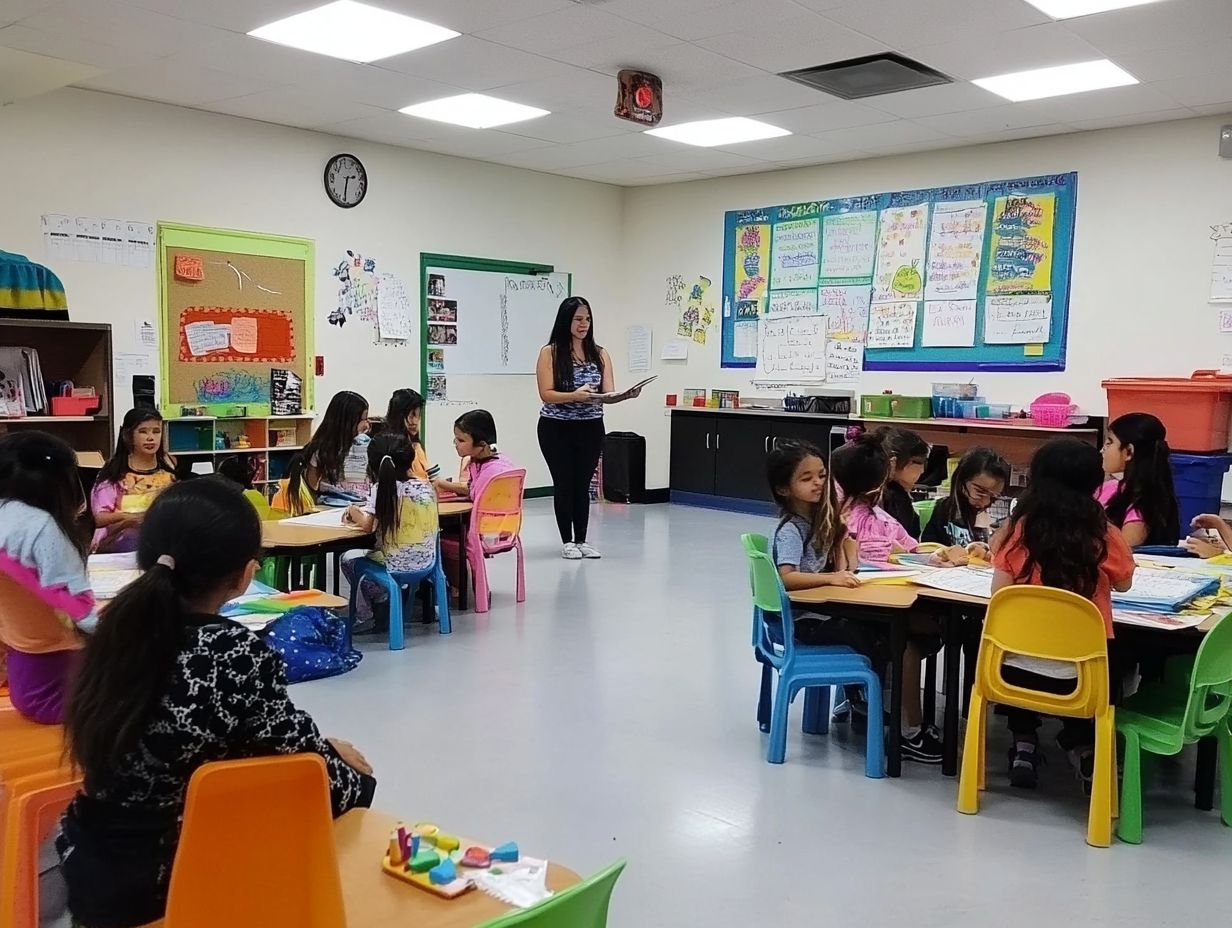Bilingual education extends beyond the mere instruction of a second language; it represents a transformative approach that significantly enhances students’ cognitive, social, and cultural experiences.
This article examines the numerous benefits that bilingual education provides not only to individual students but also to society at large.
The advantages range from improved cognitive skills and enhanced cultural understanding to economic benefits and the promotion of diverse learning environments, indicating a profound impact.
A variety of bilingual education programs will be analyzed, and prevalent challenges and criticisms will be addressed, thereby offering a comprehensive understanding of the importance of bilingualism in contemporary society.
Defining Bilingual Education

Bilingual education encompasses instructional programs that provide students with the opportunity to learn in two languages, thereby fostering both language acquisition and academic development. This approach not only enhances students’ language proficiency but also promotes cognitive advantages, including critical thinking and cognitive flexibility.
Through bilingual education, students engage with linguistic diversity, enabling them to navigate various cultural contexts and communicate effectively across different communities. As educational policies evolve, the significance of bilingual programs in early childhood education becomes increasingly apparent, as they aim to equip learners with essential skills for global citizenship and lifelong learning.
Several models of bilingual education, including immersion and dual language programs, play a crucial role in shaping educational experiences.
- Immersion programs typically place non-native speakers in environments where they are surrounded by a second language, allowing for gradual proficiency development through content instruction.
- Conversely, dual language programs integrate both native and non-native speakers, promoting fluency while fostering cultural awareness and mutual respect.
Research indicates that these approaches not only enhance academic performance in core subjects but also broaden students’ understanding of diverse perspectives, thereby preparing them for success in an interconnected world.
Benefits for Students
The benefits of bilingual education for students are extensive and multifaceted, significantly influencing their cognitive development, academic performance, and social skills.
Research indicates that students participating in bilingual programs demonstrate enhanced cognitive abilities, such as improved metalinguistic awareness and increased cognitive flexibility. These advantages not only facilitate more effective language acquisition but also correlate with higher academic achievement and greater emotional intelligence.
Additionally, bilingual education cultivates effective communication skills and encourages cross-cultural interactions, equipping students for diverse environments and career opportunities in an increasingly globalized world.
Cognitive Benefits
Bilingual education provides substantial cognitive benefits that contribute to enhanced brain development and improved critical thinking skills. Research indicates that bilingual individuals often exhibit superior cognitive flexibility, enabling them to adapt their thinking and problem-solving strategies effectively.
Bilingual students cultivate metalinguistic awareness, which allows for a deeper understanding of language structures and functions. This heightened awareness not only facilitates language acquisition but also positively impacts overall academic performance and literacy development.
A study conducted by the Center for Advanced Study of Language has demonstrated that bilingualism enhances executive functions, including working memory and attentional control, which are critical for effective learning.
Instructional strategies that support bilingual education can lead to increased engagement levels and improved information retention among students. For example, environments that incorporate dual-language programs have shown that learners outperform their monolingual peers in standardized tests, thereby highlighting the educational advantages associated with bilingualism.
These findings underscore the potential of bilingual approaches to foster not only language skills but also comprehensive cognitive growth that is essential for lifelong learning.
Social and Cultural Benefits
The social and cultural benefits of bilingual education extend beyond academic performance; they significantly enhance students’ cultural awareness and social skills. By engaging with multiple languages and cultures, bilingual students cultivate empathy and a deeper sense of identity, which leads to improved interpersonal relationships and greater community engagement.
This cultural exchange fosters an inclusive learning environment that respects diversity and promotes cross-cultural communication, ultimately preparing students for active participation in a global society.
Bilingual education serves as a powerful instrument in shaping global citizens who are not only cognizant of their own cultural backgrounds but also appreciative of the richness that diversity contributes to their communities.
As students navigate between languages, they encounter a variety of perspectives, which fosters critical thinking and adaptability. These experiences strengthen communal bonds, enabling individuals to collaborate effectively toward shared goals.
Ultimately, students who benefit from bilingual education are more likely to advocate for inclusivity, promoting a sense of belonging among their peers and instilling the values necessary for harmonious coexistence in an increasingly interconnected world.
Benefits for Society

The societal benefits of bilingual education are significant, as it plays a crucial role in fostering economic growth, enhancing cultural understanding, and promoting social cohesion.
By equipping the workforce with robust language skills, bilingual education expands career opportunities and generates economic advantages for communities.
Furthermore, by promoting linguistic diversity through bilingual programs, it cultivates cultural understanding, mitigates communication barriers, and contributes to the development of inclusive societies.
As access to education improves, communities are better positioned to engage in global dialogues, resulting in enriched cultural exchange.
Economic Benefits
Bilingual education plays a crucial role in generating economic benefits by equipping students with essential language skills that enhance their career opportunities and employability within a global marketplace.
As businesses increasingly seek individuals proficient in multiple languages, the demand for bilingual professionals continues to rise, resulting in improved job prospects and increased earning potential. Investing in bilingual education programs through adequate funding and resource allocation promotes educational equity, allowing diverse populations to access quality education and make meaningful contributions to the economy.
Plus providing theoretical knowledge, these bilingual education programs often incorporate practical skills that are vital in the workforce.
Community resources, such as language workshops and cultural exchange programs, further enhance this learning experience by offering real-world applications of language skills. Students involved in such programs not only attain fluency but also cultivate valuable intercultural competencies, rendering them appealing candidates in an increasingly interconnected world.
Educational systems that prioritize bilingualism are better equipped to prepare their students for the complexities of a diverse job market, thereby fostering a workforce capable of meeting the evolving demands of global industries.
Cultural Understanding and Diversity
Bilingual education promotes cultural understanding and diversity, contributing to the creation of a more inclusive society that appreciates multiple perspectives. By acquiring proficiency in two languages, students develop a global outlook that enhances their capacity for cross-cultural communication and deepens their appreciation for the richness of diverse cultures.
This commitment to diversity not only enriches the educational experience but also fortifies community support systems, as individuals cultivate greater empathy and become more engaged global citizens.
Participation in cultural exchange nurtures essential social skills such as active listening, adaptability, and respect for differing viewpoints, all of which are critical for successful interactions in an increasingly interconnected world.
The development of identity within such a learning environment encourages students to explore their own backgrounds while embracing those of others, fostering a sense of belonging and shared humanity.
Through these experiences, learners cultivate a profound awareness of global issues, motivating them to assume the responsibilities of global citizens who prioritize cooperation and understanding across national boundaries.
Types of Bilingual Education Programs
Bilingual education comprises a range of programs designed to address the diverse needs of students, including immersion programs, dual language programs, and English as a Second Language (ESL) programs.
Each of these models employs distinct methodologies for language instruction. Immersion programs prioritize language acquisition through full immersion in the target language, while dual language programs aim to foster bilingualism by integrating both languages into the academic curriculum.
ESL programs specifically target non-native English speakers, offering customized instruction to improve their language proficiency and enhance their overall academic performance.
Immersion Programs

Immersion programs represent a widely recognized model of bilingual education that prioritizes language acquisition through comprehensive immersion in the target language within the classroom environment.
In these programs, students receive instruction in both their native language and the target language, which not only facilitates language retention but also enhances cognitive skills and critical thinking abilities.
The dynamics of immersion classrooms often cultivate an engaging learning atmosphere that fosters peer interaction and collaboration among students from diverse linguistic backgrounds.
This distinctive structure promotes cognitive flexibility, as learners actively navigate between languages and adapt to various cultural contexts.
As students engage with a range of subjects delivered in the target language, they gain not only vocabulary and grammatical proficiency but also experience a marked improvement in academic performance.
The emphasis on collaborative activities nurtures peer interaction, enabling students to support one another’s learning journeys while embracing diversity.
This supportive community not only bolsters their confidence but also deepens their understanding of the material, ultimately equipping them for global citizenship in an increasingly interconnected world.
Dual Language Programs
Dual language programs are specifically designed to promote bilingualism and biliteracy by integrating both languages into the curriculum. This approach ensures that students attain high levels of proficiency in both their native and target languages.
These programs create a balanced linguistic environment in which students acquire academic content alongside language skills, leading to improved educational outcomes. The integration of the curriculum in dual language programs fosters a deeper understanding of cultural perspectives, thereby enhancing students’ global citizenship and empathy.
By actively engaging families in the educational process, these programs not only facilitate language assessments but also promote home environments that value bilingualism. Family support plays a crucial role in establishing a strong educational foundation and reinforcing the cultural significance of both languages.
However, challenges may arise, including the necessity for trained educators and adequate resources to effectively implement these programs. Additionally, achieving educational equity can be complex, as disparities in access to dual language programs may impact community engagement and student achievement, ultimately influencing the overall success of bilingual initiatives.
Challenges and Criticisms of Bilingual Education
Despite the numerous advantages associated with bilingual education, various challenges and criticisms continue to be prominent in discussions regarding its implementation and overall effectiveness.
Common concerns include potential language barriers that may impede academic performance, as well as the complexities of the educational policies that govern bilingual programs.
Critics frequently assert that resource allocation and funding for these programs may be inadequate, resulting in disparities in educational access and outcomes.
Furthermore, parental involvement is essential, as families must adeptly navigate the linguistic landscape to provide effective support for their children.
Addressing Common Concerns
Addressing common concerns regarding bilingual education necessitates a multifaceted approach that incorporates effective teacher training, community engagement, and a commitment to educational equity. Educators must be well-equipped with pedagogical strategies that promote language development and assist students who encounter language challenges.
Encouraging parental involvement and fostering community support are essential components in creating a conducive learning environment that facilitates personal growth and academic achievement.
To maximize the effectiveness of bilingual programs, it is imperative to secure adequate funding that supports comprehensive curriculum design tailored to the diverse needs of learners. This funding can be utilized not only for the development of robust academic resources but also for the implementation of innovative teaching methodologies that enhance student motivation and engagement.
Integrating culturally relevant materials into the curriculum enables students to connect more profoundly with their learning experiences. Furthermore, actively involving students in decision-making processes regarding their education can significantly enhance their motivation and ensure that their perspectives are acknowledged, ultimately contributing to a more inclusive and effective bilingual education system.
Frequently Asked Questions

What is bilingual education?
Bilingual education is a form of education in which students are taught academic content in two languages. This means that students receive instruction in both their native language and a second language.
What are the benefits of bilingual education?
Benefits of bilingual education include improved cognitive skills, better academic performance, increased cultural awareness and understanding, and improved employment opportunities.
How does bilingual education improve cognitive skills?
Bilingual education requires students to use both languages in their daily learning, which helps improve their problem-solving, critical thinking, and multitasking abilities. This improves their overall cognitive skills and makes them more adaptable learners.
Does bilingual education have an impact on academic performance?
Yes, studies have shown that students who receive bilingual education tend to perform better academically compared to their monolingual peers. This is because they have a deeper understanding of language and can transfer their skills to other subjects.
Why is cultural awareness and understanding important in bilingual education?
Bilingual education exposes students to different cultures and languages, helping them develop a deeper understanding and appreciation for diversity. This helps students become more tolerant and empathetic individuals, which is crucial in today’s globalized society.
How does bilingual education improve employment opportunities?
In today’s global job market, being fluent in more than one language is a valuable skill. Bilingual education equips students with the ability to communicate and work with people from different backgrounds, making them more competitive and marketable for future job opportunities.




